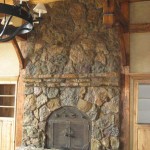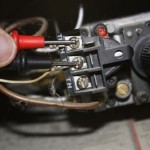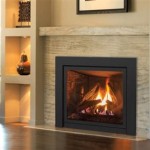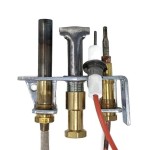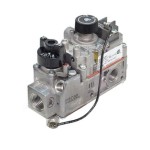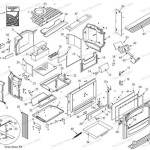BC Building Code Fireplace Clearances: A Comprehensive Guide
Fireplaces, whether traditional wood-burning or modern gas-fueled models, are desirable features in many British Columbia homes, offering warmth and ambiance. However, fireplaces also present significant fire hazards if not installed and maintained according to stringent safety standards. The British Columbia Building Code (BCBC) outlines specific requirements for fireplace clearances to combustible materials, ensuring safe operation and minimizing the risk of fires. Understanding and adhering to these regulations is crucial for homeowners, builders, and installers alike.
This article provides a comprehensive explanation of the BCBC's requirements concerning fireplace clearances. It delves into the various aspects of these regulations, covering different types of fireplaces, combustible materials, and the associated distances needed to maintain compliance. The information presented aims to equip readers with a clear understanding of their responsibilities in ensuring fireplace safety.
Understanding Combustible Materials in Relation to Fireplaces
A primary concern of the BCBC regarding fireplace clearances is the proximity of combustible materials to the heat source. Combustible materials are substances capable of igniting and burning. In the context of fireplaces, these materials include wood framing, drywall, furniture, carpeting, drapes, and other common household items. The BCBC recognizes that prolonged exposure to high temperatures from a fireplace can cause these materials to ignite, leading to a fire. Therefore, regulating the distance between the fireplace and these materials is paramount.
The classification of a material as combustible is determined by testing standards and is often indicated by the manufacturer. Materials considered non-combustible include brick, concrete, stone, and certain types of metal. While these materials can withstand high temperatures without igniting, they can still conduct heat, potentially posing a secondary fire hazard. Therefore, even when non-combustible materials are used, it is important to consider their heat transfer properties and maintain adequate clearances to adjacent combustible materials.
The BCBC often refers to listed components and appliances. A 'listed' item signifies that the product has been tested and certified by a recognized testing agency to meet specific safety standards. Using listed components, installed according to the manufacturer's instructions, is fundamental because these instructions incorporate necessary clearances and safety measures.
Specific Clearance Requirements Based on Fireplace Type
The BCBC differentiates clearance requirements based on the type of fireplace being installed. The code acknowledges that different fireplace designs and fuel sources produce varying levels of heat and therefore require different safety measures. Key distinctions are made between factory-built fireplaces and masonry fireplaces, as well as differences based on fuel type (wood, gas, or electric).
Factory-Built Fireplaces: These fireplaces are pre-manufactured units that are tested and listed as a complete system. They are typically easier to install than masonry fireplaces, but their installation must strictly adhere to the manufacturer's instructions. These instructions specify the minimum clearances to combustible materials for all sides of the fireplace, as well as the chimney or vent connectors. Failure to adhere to these clearances can invalidate the listing and create a significant fire hazard. The listing label attached to the fireplace will provide crucial information about approved installation methods and required clearances.
Masonry Fireplaces: Masonry fireplaces are constructed on-site using materials such as brick, stone, or concrete. The BCBC provides specific guidelines for the construction of masonry fireplaces, including minimum wall thicknesses, hearth extensions, and clearances to combustible materials. These requirements are generally more stringent than those for factory-built fireplaces due to the greater variability in construction methods and materials. Furthermore, masonry chimneys must also comply with code requirements regarding height, flue size, and clearance to combustible materials.
Wood-Burning Fireplaces: Wood-burning fireplaces produce high levels of heat and creosote, a flammable byproduct of combustion that can accumulate in the chimney. The BCBC requires larger clearances for wood-burning fireplaces compared to gas or electric models. The code also addresses the construction and maintenance of chimneys to minimize the risk of chimney fires. Regular inspection and cleaning of the chimney are essential for wood-burning fireplaces to prevent creosote buildup.
Gas Fireplaces: Gas fireplaces are generally considered safer than wood-burning fireplaces because they produce less heat and creosote. However, gas fireplaces still require adequate clearances to combustible materials to prevent overheating. The BCBC specifies different clearance requirements for gas fireplaces depending on their design and BTU rating. Proper venting is crucial for gas fireplaces to ensure that combustion gases are safely exhausted outside the building. Improper venting can lead to carbon monoxide poisoning, a potentially deadly hazard.
Electric Fireplaces: While electric fireplaces don't produce a real flame, they still generate heat and require clearances to combustible materials. The clearance requirements for electric fireplaces are typically less stringent than those for wood or gas fireplaces, but it's essential to follow the manufacturer's installation instructions to prevent overheating and potential electrical hazards.
Key Considerations for Hearth Extensions
The hearth extension is the non-combustible area that extends outwards from the front and sides of a fireplace opening. Its purpose is to protect the floor from sparks and embers that may escape from the fireplace. The BCBC specifies minimum dimensions for hearth extensions based on the size of the fireplace opening and the type of fuel being burned.
For wood-burning fireplaces, the hearth extension must typically extend at least 16 inches (406 mm) in front of the fireplace opening and 8 inches (203 mm) beyond each side. Fireplaces with larger openings may require even larger hearth extensions. The hearth extension must be constructed of non-combustible materials such as brick, stone, or concrete with a minimum thickness specified in the code. In areas where combustible flooring exists, the hearth extension must be installed over a non-combustible subfloor to provide adequate fire protection.
For gas fireplaces, the hearth extension requirements are generally less stringent than those for wood-burning fireplaces. The BCBC may allow for smaller hearth extensions or even eliminate the requirement altogether for certain gas fireplaces. However, it's crucial to consult the manufacturer's instructions and the local building authority to determine the specific requirements for a particular gas fireplace installation. The hearth extension, whether for wood or gas fireplaces, must be installed correctly to prevent accidental fires and protect the surrounding floor.
It is important to note that the hearth extension must be level and flush with the surrounding floor to prevent tripping hazards. The surface of the hearth extension should also be slip-resistant to ensure safety. Periodic inspection and maintenance of the hearth extension are necessary to ensure its continued effectiveness in protecting the floor from sparks and embers.
Furthermore, the support structure underneath the hearth extension must also be considered. The structure must be able to support the weight of the hearth extension and any additional loads that may be placed upon it. It is advisable to consult with a structural engineer to ensure that the support structure is adequate for the intended purpose. Failure to properly support the hearth extension can lead to cracking, settling, and ultimately, failure of the hearth extension.
When modifying an existing fireplace, the hearth extension should always be assessed to ensure that it meets current code requirements. If the existing hearth extension is undersized or constructed of combustible materials, it must be upgraded to comply with the BCBC. This may involve removing the existing hearth extension and replacing it with a new one that meets the required dimensions and material specifications.
In summary, the hearth extension is a critical safety feature that protects the floor from sparks and embers. The BCBC specifies minimum dimensions and material requirements for hearth extensions based on the type of fireplace and the fuel being burned. Adhering to these requirements is essential for ensuring the safety of the occupants and preventing accidental fires.
Importance of Professional Installation and Inspections
Given the complexity of the BCBC and the potential fire hazards associated with improperly installed fireplaces, it is highly recommended that homeowners consult with qualified professionals for both installation and inspections. A professional installer will be familiar with the code requirements and manufacturer's instructions, ensuring that the fireplace is installed correctly and safely. They can also advise on the appropriate type of fireplace for a particular home and provide guidance on proper maintenance and operation.
Building inspections are an essential part of the fireplace installation process. The BCBC requires inspections at various stages of construction to ensure compliance with the code. These inspections are typically conducted by local building officials who are trained to identify potential safety hazards. It is crucial to cooperate with the building inspector and address any deficiencies that are identified. Failure to obtain the necessary inspections can result in fines or even the removal of the fireplace.
Regular maintenance, including chimney cleaning, is also critical for the safe operation of fireplaces. Creosote buildup in wood-burning chimneys can significantly increase the risk of chimney fires. It is recommended to have the chimney inspected and cleaned annually by a qualified chimney sweep. Gas fireplace vents should also be inspected periodically to ensure that they are free of obstructions and properly venting combustion gases. Ignoring maintenance requirements can lead to serious safety hazards and potentially invalidate warranties.
Furthermore, homeowners should educate themselves about fireplace safety and proper operating procedures. This includes understanding the dangers of carbon monoxide poisoning, knowing how to properly dispose of ashes, and never leaving a fire unattended. By taking these precautions, homeowners can significantly reduce the risk of fire and ensure the safe enjoyment of their fireplace.
Modifying a fireplace or its venting system after installation can create significant safety hazards and may violate the BCBC. Any alterations should be performed by a qualified professional and inspected by the local building authority to ensure compliance with the code. Unauthorized modifications can invalidate the fireplace's listing and create a dangerous situation for the occupants of the home.
In conclusion, professional installation, regular inspections, and proper maintenance are essential for ensuring the safe and efficient operation of fireplaces. By working with qualified professionals and adhering to the BCBC, homeowners can minimize the risk of fire and enjoy the warmth and ambiance of their fireplace for years to come.

Fireplace Chimney Clearances Information Canadian

Fireplace Construction

Fireplace Clearance Design Vancouver Gas Fireplaces

Fireplace Chimney Clearances Information Canadian

Wood Stoves Canadian Home Inspection Services

Wood Stove Clearances

Chimney Height Rules Clearance Requirements For Chimneys How High Must A Be What Other Clearances Are Required Fire Safety Or Function

Wood Stoves

How To Build Install A Fireplace Mantel We Love Fire

What Is A Fireplace Hearth And How Far Should It Extend Building Code Trainer

